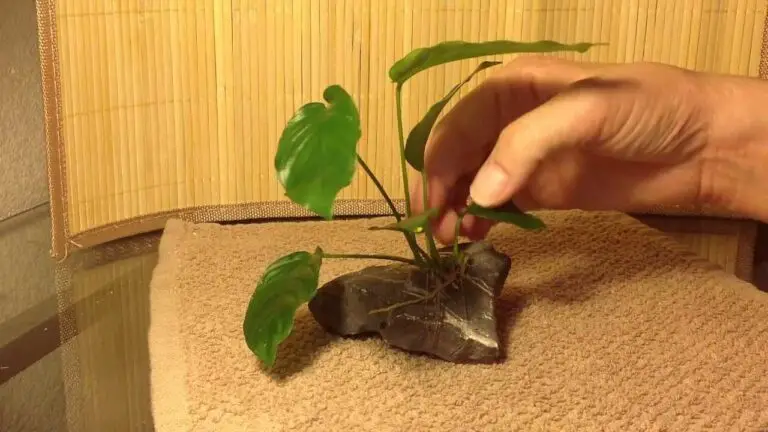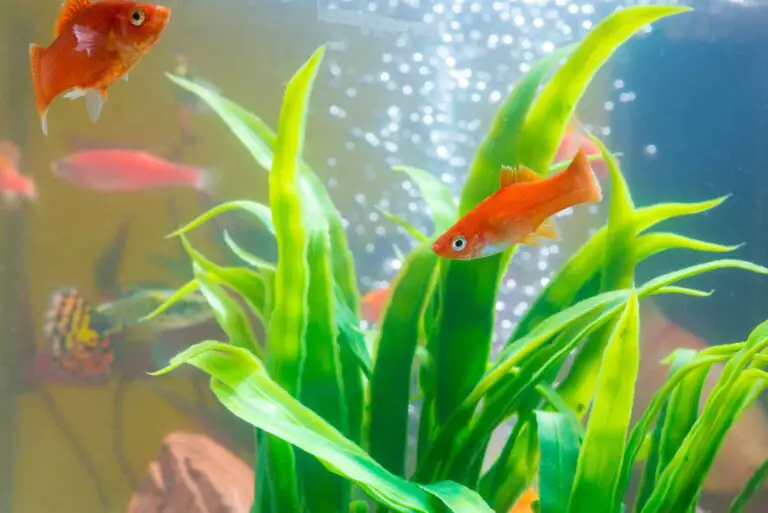Why Are My Snails on Top of Each Other: Understanding Snail Mating Behavior
Snails might stack on top of one another because they need warmth and moisture. Snails are cold-blooded, so they rely on things like the sun or warm surfaces to control their body temperature.
When they can’t find enough warmth in their surroundings, they gather up close to stay cozy.
Snails really like a humid environment, more than most other animals. So, when there’s high humidity around, they may group together to stay damp and comfy.
When snails face a shortage of heat or moisture, they huddle together to stay comfy and thrive in their home.
Now, here’s the simple answer to why snails climb on top of each other: They’re getting romantic! When two snails meet, they do something called an “arching embrace.”
Basically, one snail climbs over the other, and this lets them share their sperm and make baby snails.
Have you ever noticed your snails piling up on top of each other? It may seem like an unusual behavior, but it is actually quite common among snails.
I will explore the reasons behind why snails exhibit this behavior and what it means for their overall well-being. So, let’s dive in and unravel the mystery of why snails stack up!
Snail Stacking: A Natural Behavior
Snail stacking, also known as snail stacking or snail tower, is a natural behavior observed in many species of snails. It occurs when multiple snails climb on top of each other, forming a tower-like structure.
This behavior is more commonly seen in land snails, although it can also be observed in aquatic snails.
Reasons Behind Snail Stacking
1. Mating Behavior
One of the main reasons why snails stack up is for mating purposes. Snails are hermaphrodites, meaning they possess both male and female reproductive organs.
When two snails come into contact, they engage in a mating ritual that involves climbing on top of each other. This allows them to align their reproductive organs and exchange sperm.
The stacked position also helps to ensure a successful transfer of sperm between the two snails.
2. Shelter and Protection
Snail stacking can also serve as a means of shelter and protection. By piling up on top of each other, snails create a physical barrier that shields them from potential predators.
This behavior helps them stay safe and minimizes the risk of being attacked or eaten. The tower-like structure created by snail stacking can provide protection from harsh weather conditions, such as excessive heat or cold.
3. Food Source
Snail stacking can also be influenced by the availability of food. Snails are known to be voracious eaters, and when they come across a particularly abundant food source, they may gather together to feed.
By stacking up, they can reach higher areas where food is plentiful. This behavior allows them to maximize their chances of finding and consuming food.
4. Social Interaction
Snails are social creatures, and stacking up on top of each other can be a way for them to interact and communicate. It is believed that snails may engage in this behavior to establish dominance or hierarchy within their group.
By climbing on top of each other, they can assert their position and establish their authority. This social interaction is an important aspect of snail behavior and helps to maintain harmony within their community.
Common Health Concerns
Even though snails are known for their resilience, they’re not entirely free from health troubles. Shell damage is a frequent issue for these little mollusks.
It can happen for several reasons, like rough handling, subpar water conditions, or not getting enough calcium in their diet. When a snail’s shell is compromised, it’s like a suit of armor with a chink.
They become more susceptible to infections. In such cases, they might need some medical care to patch up their shells.
Another health worry for snails is dehydration. These creatures are quite particular about their living conditions, and moisture is high on their list.
When their surroundings become too dry, it can cause problems. Snails may become sluggish, lose their appetite, and generally not feel their best.
Think of it as how we humans would feel if we went without water for a while. In severe cases, dehydration can even be fatal.
In essence, snails are hardy, but they’re not invincible. Monitoring their shells and ensuring proper moisture levels in their habitat can keep them healthy and happy. Just like other living beings, they deserve our care and attention.
Signs of Stress
The signs of stress in snails and how to address them:
| Signs of Stress in Snails | Possible Causes | Solutions |
|---|---|---|
| Lethargy | Environmental factors such as temperature or humidity. | Adjust the snail’s environment to optimal conditions. |
| Loss of appetite | Poor diet or unsuitable conditions. | Provide a varied and suitable diet, and ensure proper habitat conditions. |
| Hiding or remaining motionless for long periods | Disturbance or discomfort in the environment. | Reduce noise and disturbances in the snail’s surroundings. |
| Excessive mucus production | Stress or irritation. | Identify and address the source of stress or irritation. |
| Shell damage | Physical injury or environmental stress. | Prevent physical harm and maintain a suitable habitat. |
In conclusion, snails, like any other animals, can experience stress, and it’s important to recognize and address these signs to ensure their well-being. Proper care and attention are essential for keeping snails happy and healthy.
Why do snails cluster together?
Snails often gather together for different reasons, which depend on their species and where they live. Here are some common reasons why they do this:
- To Stay Cool in Hot Summers: Snails are cold-blooded, which means they can’t control their body temperature like warm-blooded animals can. So, when it’s really hot and dry, they climb up plant stems or trees and huddle together in groups. This helps them avoid the hot sun and keep their bodies moist.
- Talking and Mating: Snails like to get close to each other to communicate and mate. They can send signals and hormones when they’re near. They also find potential partners and share sperm by crawling over each other. It’s all part of their way of making babies.
- Helping Each Other Out: Snails are pretty good neighbors. They climb on top of each other to get rid of parasites and dirt from their shells. Plus, being in a group can provide safety from predators. It’s like they’re looking out for one another.

Nerite Snails on Top of Each Other
Nerite snails are social creatures and can often be seen on top of each other. This behavior is a form of communication, as they exchange hormones to help them recognize one another.
They will also climb onto the shells of their tankmates to groom them or provide protection from danger.
In addition, nerite snails may even take turns being at the top when stacking up against each other in order to share resources and allow for better access to oxygen in the water column.
Garden Snails Attached to Each Other
Garden snails are a type of gastropod (shell-bearing) mollusk that can often be seen clinging to each other in pairs or groups. This behavior, known as apophallation, is thought to be part of the mating ritual for these creatures.
During apophallation, two snails will wrap their bodies around each other and exchange sperm packages before separating again.
Garden snails are hermaphrodites, meaning they have both male and female reproductive organs, so either snail could be sending or receiving the package during this process!
Snails Fighting Or Mating
Snails are strong fighters when they compete for mates. They have a shell-pushing battle called ‘love darting’ during mating.
They use love darts made from calcium carbonate to try to knock their partner’s shell off balance.
This helps the strongest and fittest snails pass on their genes for successful reproduction.
Why are My Mystery Snails Attached to Each Other?
Mystery snails often attach to each other via a process known as “byssal threading”. This is when two mystery snails secrete a sticky substance from their foot that forms a small string between them.
Byssal threads can also be used to attach themselves to rocks and tank decorations for safety, and are an interesting behavior for hobbyists to observe.
Mystery Snails Mating
Mystery snails are a popular addition to many aquariums, and mating is an important part of their life cycle. Mystery snails can reproduce both sexually and asexually, with sexual reproduction requiring two snails for successful mating.
During the mating process, one snail acts as the male while the other acts as female. The male will release sperm into the water which is then taken up by the female who will then lay her eggs inside her shell where they remain until they hatch.
Do Snails Fight Each Other?
Snails are not typically known for being aggressive creatures, but they can and do fight each other when competing for food or a mate.
During these fights, snails will push against each other with their heads and antennae in an attempt to gain dominance over the other snail.
While it’s unlikely that serious injury would occur from such a battle, the victor usually ends up with access to more resources than the loser.
Why do snails climb on each other?
Snails stack up for several reasons:
- Mating: They form an “arching embrace” for efficient sperm transfer.
- Warmth and Moisture: Stacking helps them stay warm or moist in challenging environments.
- Air and Exploration: Aquatic snails may climb for air, mates, or food.
- Social Interaction: Some snails, like Nerites, stack as a form of communication and protection.
- Dehydration Defense: Land snails cluster to survive high temperatures and low humidity.
Why Do Snails Piggyback?
Snails are unique creatures who often travel in an unusual way: piggybacking. This behavior is seen among many species of snails, and scientists have been studying it for years to try to determine why they do it.
While the exact reason remains mysterious, there are a few theories as to why these slimy creatures might choose this method of transportation.
One theory suggests that snails piggyback on each other to make long journeys more efficient by reducing the amount of energy expended in travelling from one place to another.
It also allows them access to higher-up places that would otherwise be difficult or impossible for them to reach alone due its slimy body structure and lack of limbs.
When two or more snails join forces and form a “train” like this, they can move much faster than if one were trying alone and with no extra effort!
Since snail shells provide protection against predators while moving overland (unlike swimming), hitching a ride on another’s shell could help increase their chances of survival.
How Do I Know If My Snails are Happy?
Snails don’t possess real brains, so they don’t experience emotions like happiness. Instead, we aim for their well-being. Here are indicators that your snails are in good health and comfortable:
- Consistent Eating: Healthy snails will eat regularly.
- No Hibernation: They won’t hibernate when they’re in good health.
- Reproduction: Over time, they may start reproducing if they’re healthy.
- Active and Eating: A healthy snail will be active and show a healthy appetite.
- Smooth, Vibrant Shell: A sign of health is a smooth, bright shell without cracks or pits.
- Active Movement: A healthy snail will display plenty of movement.
Keep in mind that it’s challenging to gauge a snail’s internal state solely through external observations. If you have concerns about your snails’ well-being, it’s best to seek advice and assurance by providing specific details about your care practices.
Mystery Snails On Top Of Each Other
Conclusion
Snail stacking is a fascinating behavior that serves various purposes for these unique creatures. It is a natural part of their reproductive, social, and survival strategies.
By understanding the reasons behind snail stacking, we can better appreciate and provide for the needs of these remarkable creatures.
So, the next time you spot your snails on top of each other, remember that it is just their way of navigating the world and interacting with their environment.





